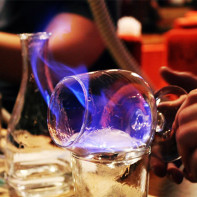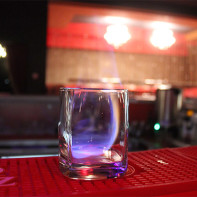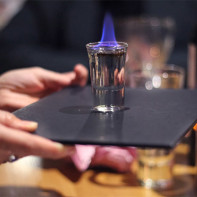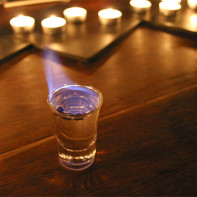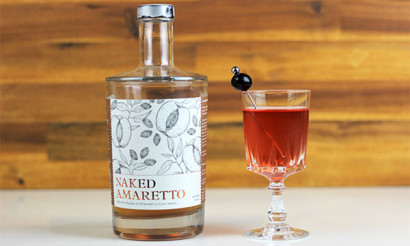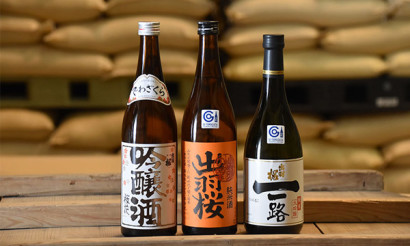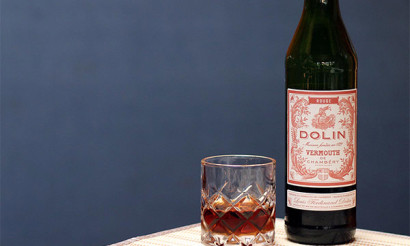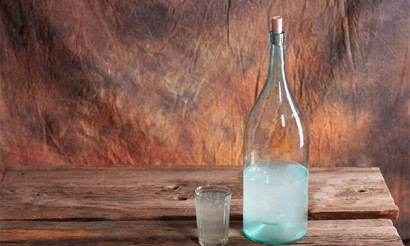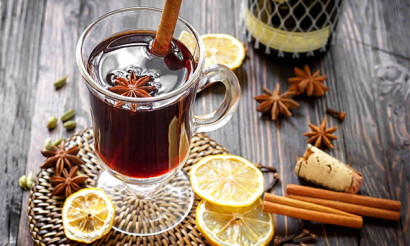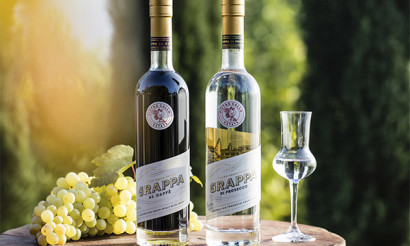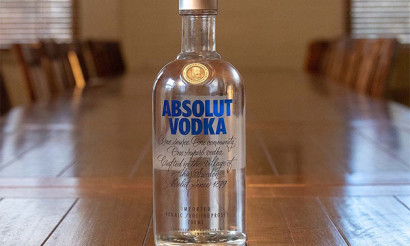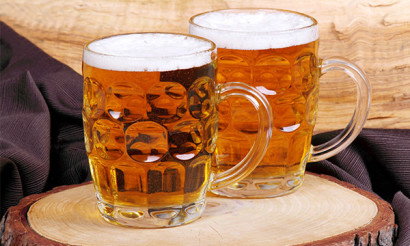How to properly drink sambuca
The composition of this strong liquor necessarily includes elderberries. It is believed that it is from the Latin designation of the plant that the name of this type of alcohol occurred. Interestingly, the alcoholic tincture of star anise, which became the progenitor of the liquor, was created as a remedy for coughs and nervous disorders. Further the story is very similar to the popularization of Becherovka and other drinks, considered at first as medicine.
- How sambuca came to the European expanse
- Types
- White
- Dark
- Red
- Popular Sambuka Brands
- Composition and Calories
- How to choose glasses for sambuca
- How to drink sambuca at home
- Burning
- The way of two glasses
- With "flies"
- Ice
- Milk mix
- Extreme
- What to snack on?
- Sambuka Cocktails: Recipes
- Home Sambuka Recipe
- Benefits and Harms of Sambuka
How Sambuka came to Europe
The liquor recipe on anise seeds was documented only in 1945 after Italian Angelo Molinari, experimenting with recipes based on alcohol, anise and herbal compounds, created a unique drink. It was absolutely transparent, with a rich taste and spicy aroma. The strength reached 42%, and it burned beautifully when served in low and wide glasses. Spectacular, tasty and strong, it was simply doomed to popularity.
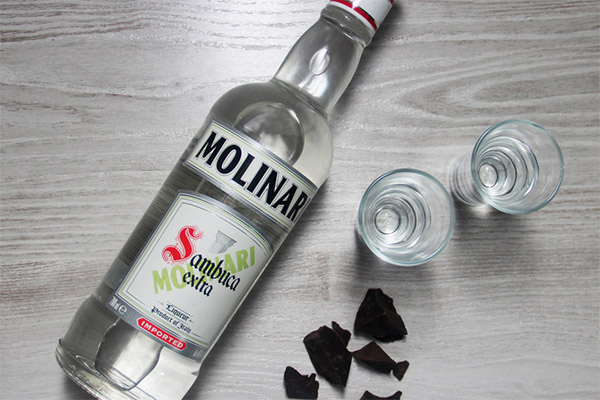
The history of sambuca began almost a century ago, when a recipe was developed for anise vodka, used in therapeutic doses to improve digestion. The authorship belongs to Luigi Manzi. The enterprising Italian settled down not far from the temple and hid the finished product in the cellar. Even then the volume of production was impressive, albeit illegal, but there were more and more connoisseurs of the liquor, and the memory of the fact that the remedy was produced for medicinal purposes was getting weaker and weaker.
On the origins of the name experts also have several versions. One of them is smuggling. It is believed that the source was the expression santa buca, a hole in the floor, and sacred, as it has never failed the owner of the house and securely hid the liquor from the authorities.
The second version comes from the name of a nearby town. Sometimes it is said to be of Arabic origin from the name of anise, which sounds like zammut. A third mentions that sambuca was the name of the type of ship that carried the drink.
There is no exact data on this fact, but a strong digestif with a pleasant smell and taste of anise has firmly taken its niche in the range of alcoholic beverages.
Types
In any variant, regardless of brand and manufacturer, the liquor retains its signature flavor. Varieties are divided by color, place of production and partly by level of strength.
White
It is called traditional, its recipe retains the ancient proportions and quality of the ingredients. It is transparent in appearance, as it is a strong alcohol, and the essential oils in it successfully dissolve without leaving a visible trace. On the other hand, when mixed with other ingredients, it instantly becomes cloudy. The exact recipe is kept strictly secret. Among the known ingredients in sambuca are:
- spring water;
- spirits;
- sugar;
- essential oils of fennel and star anise;
- mint, thyme, elderberry, and gentian extracts.
Different manufacturers allow small deviations from the basic recipe, combining spicy herbs in their own way.
Dark
The basic variety belongs to the elite, has a deep blue color. This unusual coloring is due to the addition of licorice root. The taste combines the piercing freshness of anise and voluminous licorice sweetness. The original combination gave the drink medicinal and preventive properties. It is recommended for improving digestion, preventing colds, stabilizing the emotional state and, strange as it may seem, for the gentle removal of toxins.
Coffee and chocolate versions are available for sale. Such a bouquet of flavors also has its admirers. The chocolate and anise variety has acquired a gravity and high level of sweetness in the production process. The coffee kind has a deeper flavor. It is achieved by mixing several types of coffee from different climatic zones. This is how the famous Molinari caff is made up of Arabica and Robusta from Caribbean and Polynesian plantations.
Red
This shade was not only a great marketing move, but also offers a wide range of flavors. The color is achieved by the addition of natural ingredients, among which the most commonly used are:
- cherry;
- raspberry;
- pomegranate;
- cranberry.
The consistency of such a drink is viscous and quite dense. The bright fruit and berry bouquet, sweetness, relatively low alcohol content and external effect have made the liquor mainly a female drink.
It is worth considering: the popularity of this type of sambuca is much less than the main ones, it is produced in more modest volumes and appears on sale less often.
Popular Sambuca Brands
Italian companies lead the market, which is quite expected.
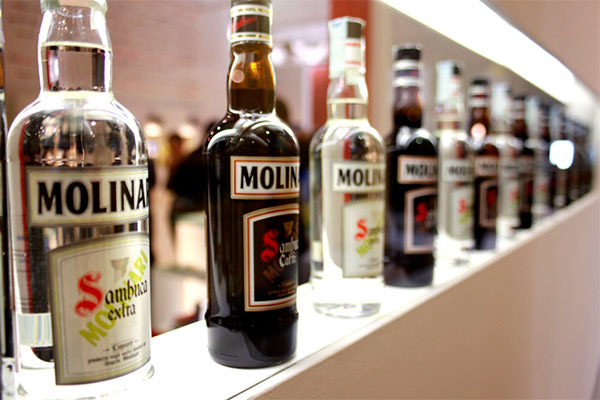
- The most respected and ancient is considered to be Molinari, named after the founder of the first production. The regional drink successfully conquered the world market within a short time. After the introduction of anise in the recipe, white Sambuca Molinari became considered a national treasure and began to be produced for export. The level of alcohol content in the white variety is 42%, in the dark variety - at least 38%.
- Ramazzotti produces white and dark versions, both most often used as digestifs and bases for cocktails. Production began at the end of the 19th century, the white variety is distinguished by subtle touches of violet and vanilla, which are the trademark of the brand.
- Luxardo is considered a family company and is geographically located in the province of Veneto. It is known for its experimental recipes in the field of fruit liqueurs. The attitude to the innovators is ambivalent. They are simply adored by the lovers of sweet viscous drinks on the background of sincere indignation of the lovers of the classic genre. The latest developments of the company's specialists concern the introduction of spices into the composition. Already available in chili pepper and cinnamon.
- Di Amore prides itself on its high strength and crystal clear reputation. The peculiarity of the recipe is the addition of lemon zest, which slightly reduces the sweetness of the finished product.
- Cellini line is dedicated to the famous sculptor and jeweler. It comes in several flavors, focused on the bohemia, the price of the strong drink varies from 720 to 850 rubles for a 0,7 l bottle. It is most often used in cocktails, combines well with tonic, Sprite, and juices.
- Cesare made a bet on the mix of classic and modern in taste and bottle design. There are two companies under the brand: Italian and Spanish. The drinks are strong and of high quality. It is distinguished by its transparency and a light liquorice aftertaste.
- Wakkari is produced in the Netherlands, there are dark and light varieties. In contrast to the classic, the alcohol level is no more than 38%, which is not to everyone's liking and causes low sales. But Mexicans love and appreciate the liquor almost as much as their native tequila, paying tribute to the rich flavor and the feeling of light freshness in the aftertaste.
- Villa Viola is also not one of the Italian brands. It is produced by the German distillery Karlheinz Haus, clearly following the traditional recipe. There is no special zest, the drink is quite in line with generally accepted standards and is in demand.
Other famous brands are Manzi, Isolabella, Colazingari, Antica, Borghetti.
Composition and calories
The basis is wheat alcohol. Sugar syrup and essential oils from plants are added. A mandatory ingredient is star anise. Then there are variations on a free theme, ranging from elderberry extract, licorice root, licorice and ending with chili pepper, cinnamon and cardamom.
The caloric content is medium, with 240 kcal per 100 grams of the product. The tricky thing about sambuca is that against the background of a refreshing taste, you do not feel its strength, and it is very difficult to control the amount you drink.
How to choose glasses for sambuca
The drink requires unhurried enjoyment of taste. To serve it as an aperitif or digestif in its pure form, tall stacks or small glasses are used. The final choice depends on how it is consumed. If guests prefer a burning version, you must choose thick-walled containers that hold the temperature difference well.
If the drink is served chilled, elegant shot glasses on a leg of medium length or glasses on a flat base with a thickened bottom will do. The slightly opening bell shape allows you to enjoy the aromatic freshness of the aniseed component. The classic Italian version of sambuca glassware is shots.
How to drink sambuca at home
The drink is quite young, but its serving has already acquired traditions and rituals. Since sambuca has become very popular in nightclubs, bartenders try to surprise not only with an extravaganza of flavors, but also with a spectacular external serving. There are many ways to drink it, the most common are about 6.
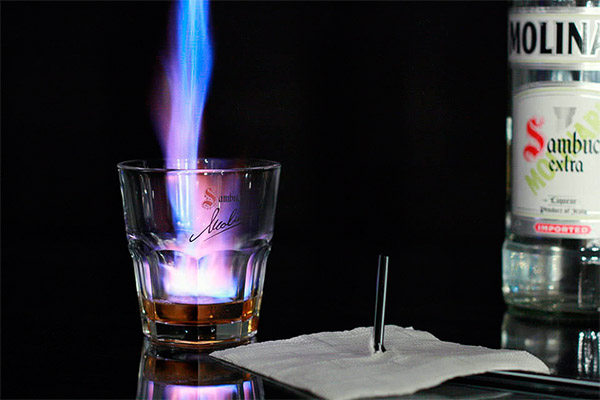
Burning
A drink is lit in a shot. After 10 seconds of burning, it is extinguished with a strong exhalation and drunk in a volley, while holding the breath.
The method of two glasses.
This is very familiar to absinthe lovers. The purpose is to enjoy the taste and aroma of essential oils at the same time. To do this, the burning sambuca is covered on top, blocking the access of oxygen. When the combustion is finished, the upper glass is placed with its foot upwards on a special napkin, with a short cocktail straw slipped under the edge of the container. They drink the drink in one gulp and then inhale the fumes from the second goblet through the tube. Complicated, but effective.
With "flies."
In Italy, coffee beans symbolize happiness, health, and prosperity. They are slightly roasted and tossed into a glass with a drink for good luck. The degree of roasting should be minimal, otherwise the aftertaste will be blocked by a more aggressive component. This method is used for white sambuca. Throwing coffee into a coffee or chocolate variety is almost useless. This is sometimes done only to observe tradition. By the way, it is customary to chew the beans, turning the decorative-symbolic element into an appetizer.
Ice
This is the only way to drink a clean drink. The bottle is put in the freezer for 20-30 minutes and then it gets cold quickly, after which you just pour 30-50 ml into a shot, drink it in 1-2 sips and enjoy the aftertaste with a slice of orange. Sometimes one tries to stretch the pleasure and drink in very small sips. But connoisseurs warn that the taste may remind of a child's mixture to those who are particularly sensitive.
Milk mix
Contrary to the name, drinks are not mixed, but drunk in sequence. For proper consumption, one takes a Sambuca shot in one hand and a glass of cold milk in the other and drinks it in a row. The connoisseurs say that an unforgettable taste experience awaits the one who takes the risk.
Extreme
The idea is that the drink is lit in the mouth and after a few seconds of combustion is swallowed.
One thing to keep in mind: To successfully perform the trick, you must carefully wipe your lips, tilt your head, and before you swallow the sambuca, close your mouth to extinguish the combustion. The way is spectacular, but there are safer and more pleasant ways to attract women's attention.
What to snack on
Therapeutic doses are able to withstand few, which means that the case will not end with 1-2 portions. The level of alcohol is impressive, and the taste successfully masks it, so you can't do without a properly laid table. This drink is served in two versions - as an aperitif and a digestif. In both cases, the appetizer should be relatively light and not overpower the taste of anise. For this purpose will do:
- cheeses;
- olives;
- nuts;
- lean lean meat;
- ham and cheese rolls;
- fruit slices;
- chocolates;
- puff pastries;
- tartlets with fruit and cream filling;
- desserts.
It is not so much the number of appetizers as their decorative design that is important in table decoration.
Cocktails with Sambuca: Recipes
Liquor itself carries a rich palette of flavors, so it is added to cocktail mixes quite a bit. One of the most popular is coffee with liquor. It does not even need to be mixed, you just pour 20-30 grams of the drink on the wall and enjoy the splendor of taste with a thick cloud of aroma. Popular choices in nightclubs include:
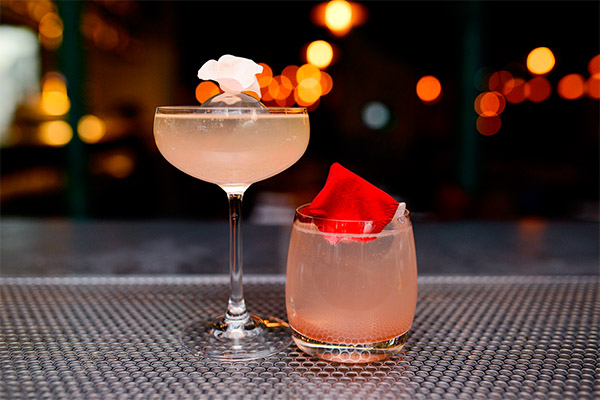
- "Hiroshima," which includes one part each of sambuca, baileys and absinthe with pomegranate syrup added. It is made in layers, with syrup on the bottom and absinthe on the top.
- "Liquid Nitrogen" is whipped in a shaker of liqueur, ice cream and coconut milk in the ratio of 40:50:30 ml, poured into a tall glass and chilled for an extra half hour.
- "Cocoon" is served in a narrow flute, where coca-cola, sambuca and lemon juice are mixed, the composition is completed with a mint leaf and a long straw.
The liquor combines perfectly with juices and carbonated beverages, that's why it's easy to make an existing cocktail or come up with your own recipe even at home.
Homemade Sambuca Recipe
One legend has it that a peasant mixed up the jars and put anise, elderberry and a bunch of spicy herbs into a jug with a hop tincture instead of a container with a medicinal decoction. Frustrated, he gave up on the tainted product and remembered it months later. When he sampled it, he realized that he had received by chance a splendid drink, which was confirmed by the guests, who were absorbed in tasting it almost until morning.
There are no special difficulties in making sambuca at home. You won't get the vintage look, but sometimes the homemade version is able to surpass the sample. Ingredients needed:
- The fruits of star anise and common anise, 50 g each;
- Alcohol or double purified moonshine not lower than 70%;
- 30 g of black elderberries;
- 300 g of fructose, sugar makes the drink cloudy;
- 0.6 liters of water;
- 1/4 lemon peel.
The process is divided into 3 parts: infusion, distillation, blending. At the first stage, elderberry, anise seeds and lemon zest are put in a container, pour alcohol and put in a dark warm place for 4-5 days. The mixture is stirred every day to dissolve the essential oils.
After aging it is diluted with one glass of water and poured into the distillation cube. There also add the fruit of badjan and 1 / 3 of the mass used to prepare tincture. The subtlety is in very slow distillation, not faster than 3 drops per minute. One more nuance - it is necessary to stop the process as soon as the volume of the obtained liquid reaches 0.7 liters. It will concentrate all the necessary flavors.
Then prepare a sweet solution by stirring the fructose in boiling water and boiling over low heat for 2-3 minutes.
Important: Distillate is poured into the syrup in three equal portions with continuous stirring.
The resulting mixture should cool, after which it is poured into bottles, securely corked and sent to a cool place to "rest" for at least 30 days. The longer you do not touch the bottle, the more refined will be the taste of sambuca.
The benefits and harms of sambuca
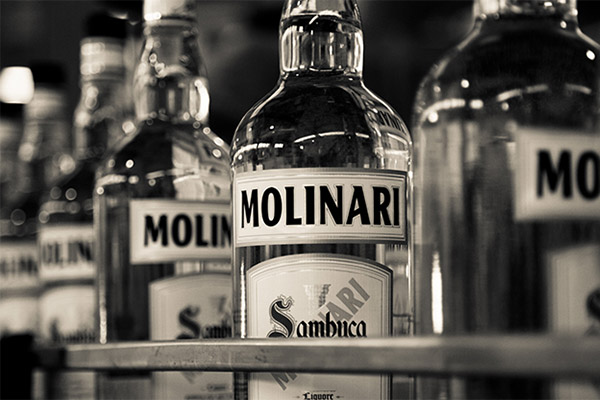
The liquor contains spicy aromatic and medicinal herbs. Anise has long been used to relieve coughs, restore vocal cord function, fight inflammation, and relieve fevers and fevers. It is worth remembering that any alcoholic beverage disinfects the intestines, preventing the spread of infections, which is especially important during epidemics. A small amount of liquor will improve digestion, soothe frayed nerves, give the conversation a relaxed and easy feeling.
On the other hand, the high content of sugars and alcohols has a negative effect on health if it exceeds a reasonable amount. It is not recommended for diabetics, those who suffer from kidney failure, heart disease in the period of exacerbation, alcohol addiction. You should not offer such a treat to pregnant women and children.
In other cases, a shot of fragrant liqueur draught will bring only benefit and aesthetic pleasure in the process.
«Important: All information on the site is provided solely for informational for informational purposes only. Before applying any recommendations, consult a specialist in the field. specialist. Neither the editors nor the authors are liable for any possible harm caused by materials."

